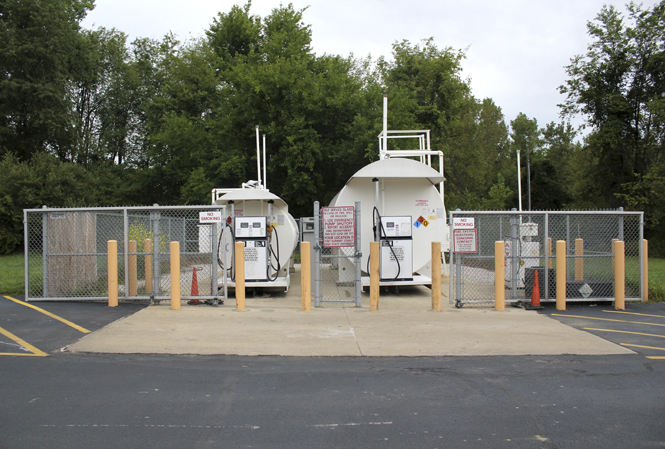Departments fuel up at university gas station
September 5, 2011
When university vehicles need gas, they don’t go to the local BP or Sunoco to fill up. They go to the university’s fuel service station at the University Facilities Management complex.
About 45 departments on campus use the fuel, such as residence, dining and mail services, said Darwin Friend, Fleet Services superintendent.
Fleet Services is “in charge of acquiring, preparing and disposing of all vehicles for the eight (Kent) campuses,” Friend said.
Great Lakes Petroleum delivers fuel — gas and diesel — to the university about once a month. Between all of the departments that utilize the service, about 6,000 to 7,000 gallons of fuel are used per month.
The service is for university vehicles and equipment only, not for personal use.
Through state contracts, the university can acquire the fuel state-tax free from Great Lakes Petroleum, a BP product.
“Since we’re a state entity, we may not always pay state tax on fuel, where if you’re buying for BP, you’re always going to pay state tax,” Friend said.
However, sometimes Fleet Services pays more for fuel because the price of gas fluctuates daily.
For example, if Fleet Services purchases fuel on a Monday at $3.42 a gallon and BP buys its fuel on a Thursday at $3.35 a gallon, Kent State has now paid more for its fuel, Friend said.
However, since the university is affiliated with the state, fuel can sometimes be purchased for a lower price.
“We buy fuel with the power of the state of Ohio; therefore, we can buy a little bit cheaper than what the public can at 30 gallons at a time where we may be buying 8,000 at a time,” Friend said. “…Like any business they’re going to give you a better price when you buy more product from them.”
Each department that utilizes the services has its own fuel key to obtain the gas and diesel.
If the department workers had to fill up at a local gas station, they would also have to keep their receipts, but through the fuel card, Fleet Services can keep track.
“It’s controlled, and we can more tightly track fuel usage,” Friend said. “(Also), they don’t have to drive and get filled up off-campus, because then it takes that worker to drive off campus, fuel up and come back.”
Through the key, Fleet Services can tell which department filled up which vehicle at what time. At the end of every month, the departments pay for however much fuel it used, said Montago Burgess, Fleet Services coordinator.
When university vehicles travel off-campus and need to fill up, they are given a voyager card, which is similar to a credit card. Employees are given a list of which gas stations will accept it.
The total amount accumulated on the voyager card is added to the payment total for the department at the end of every month, said Burgess.
During the winter months, more fuel is typically used due to the need for snow blowers and snow-plow trucks, said Burgess.
“We have quite a large of number of equipment that they can’t travel down to the gas station, so we have to maintain some kind of fueling source for them here on campus,” Friend said. “Otherwise we’d be doing the five-gallon cans and things like that, so all in all it’s a win-win situation from having that fuel station on campus where everyone can access it.”
Caitlin Restelli is an assigning editor for the Daily Kent Stater. Contact Caitlin Restelli at [email protected].

























